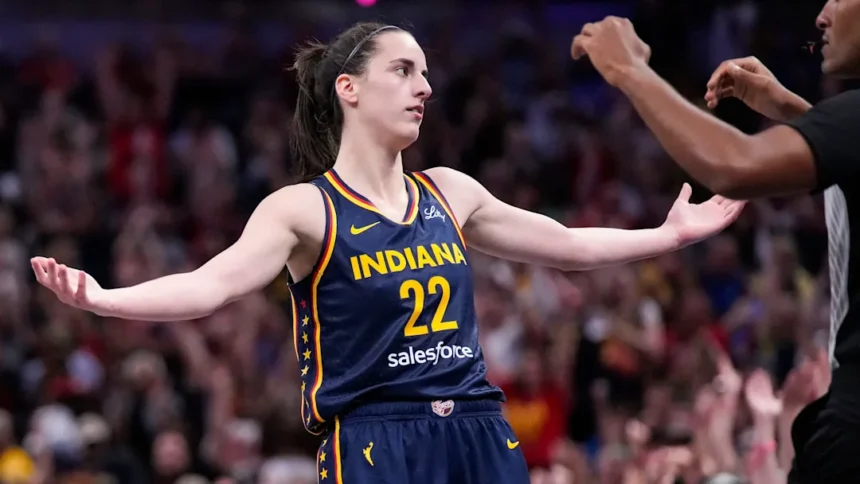The Indiana Fever knew they were making a bold move when they snagged Caitlin Clark as the first overall pick in the WNBA Draft. But what they didn’t know? She wasn’t just a game-changer—she was a city-changer. With her arrival, Indianapolis has been riding a $36 million revenue wave, and it’s all thanks to the 22-year-old rookie who’s making her mark faster than a half-court buzzer-beater.
The Clarkconomy: Indianapolis Hits the Jackpot
Before Clark even laced up for her first game, fans were practically throwing their wallets at the Fever’s ticket office. When league commissioner Cathy Engelbert called her name, you could almost hear cash registers ringing. Ticket prices? Skyrocketed. Season tickets? Sold out faster than concert tickets to Taylor Swift’s Eras Tour. Away games? You guessed it—standing room only, as fans flocked to see Clark face off against other WNBA stars.
But it wasn’t just ticket sales going through the roof. Merchandise sales, TV viewership, and social media engagement exploded. It’s as if Clark had sprinkled some magic dust on women’s basketball, turning it into the hottest commodity in town.
Dr. Brewer’s $36 Million Revelation: The Rookie with a GDP
Enter Dr. Ryan Brewer, a valuations expert who, after crunching more numbers than a calculus professor on caffeine, concluded that Clark is responsible for 26.5% of the WNBA’s league-wide activity. Let that sink in—one player driving over a quarter of the league’s action. And the kicker? Her impact on Indianapolis: a jaw-dropping $36 million.
Dana Hunsinger Benbow from the Indianapolis Star didn’t mince words: “Caitlin Clark is the financial MVP Indianapolis didn’t know it needed.” Brewer’s analysis suggests that Clark’s presence is not just a sports story—it’s an economic boon for a city that’s turning Fever-mania into a profitable frenzy.
The Million-Dollar Question: How Do You Keep a Superstar?
With all this money flying around, the million-dollar question isn’t if Clark deserves a big payday—it’s how Indianapolis can keep her long-term. John Holden, a business law professor at Indiana University’s Kelley School of Business, suggested that locking Clark down for a million dollars a year makes perfect sense. And honestly, who wouldn’t?
But here’s the kicker: the WNBA’s salary cap structure is tighter than a last-second defensive squeeze. So, what’s the city to do? Maybe toss in a few local endorsements, get her name on a billboard, or better yet, name a street after her. “Caitlin Clark Boulevard” has a nice ring to it, doesn’t it?
A Fever Dream They Can’t Afford to Wake From
Indianapolis has seen its fair share of rising stars—Tyrese Haliburton from the Pacers and Anthony Richardson from the Colts—but none have created the economic whirlwind that Clark has. She’s not just breaking records; she’s breaking bank accounts—in the best way possible.
If the Fever and Indianapolis want to keep this golden goose, they better get creative. Whether it’s wooing her with local partnerships, treating her family like royalty, or rolling out the red carpet (literally), they’ve got to play their best hand. Because if Caitlin Clark leaves, the Fever may cool—but the economic cold snap would be brutal.
